Microstructural Investigation of Stress Corrosion Cracking in Cold-Formed AISI 304 Reactor
Abstract
:1. Introduction
2. Materials and Methods
3. Results and Discussion
3.1. Microstructure of Cold Formed AISI 304 Reactor
3.2. Microstructural Evidence of Cl induced Stress Corrosion Cracking
3.3. Preferential Site for Crack Propagation: Martensitic Transformation
4. Conclusions
- Microstructure of the cold formed AISI 304 stainless steel reactor was determined by using microscopy. It was revealed that high density slip bands were formed in the grains and along the slip bands, where 10–20% of the austenite phase transformed into α’ martensite phases due to severe cold working.
- Microstructure of the cracked area of the reactor was investigated. Based on the Cr-rich oxide layer with Cl enrichment, it was confirmed that the crack was generated by Cl-SCC. The crack propagated in transgranular mode and was parallel to the slip bands within austenitic grains.
- Microstructure of the crack tip of micro cracks was studied by using TEM analysis. It was revealed that the crack propagated along the interface between α’ martensite and austenite where high local misorientation exists within grains.
- It was revealed that Cl-SCC occurred only at the bottom part of the reactor due to martensitic transformation induced by cold-forming. Since α′ martensite could act as a highway for the propagation of Cl-SCC, strain-induced transformation needs to be suppressed to prevent shortening the life of the PVC reactor.
- Recurrence of Cl-SCC could be prevented by post heat treatment or thermo-forming. The phase fraction of α′ martensite could be reduced by post heat treatment after cold-forming. The reverse transformation from α’ martensite to γ austenite was in the range of 550 ° to 650 °C.
Author Contributions
Funding
Acknowledgments
Conflicts of Interest
References
- Torchio, S. Stress corrosion cracking of type aisi 304 stainless steel at room temperature; influence of chloride content and acidity. Corros. Sci. 1980, 20, 555–561. [Google Scholar] [CrossRef]
- Speidel, M.O. Stress corrosion cracking of stainless steels in NaCl solutions. Metall. Trans. A 1981, 12, 779–789. [Google Scholar] [CrossRef]
- Maier, I.A.; Manfredi, C.; Galvele, J.R. The stress corrosion cracking of an austenitic stainless steel in HCl + NaCl solutions at room temperature. Corros. Sci. 1985, 25, 15–34. [Google Scholar] [CrossRef]
- Nakayama, T.; Takano, M. Application of a slip dissolution-repassivation model for stress corrosion cracking of AISI 304 stainless steel in a boiling 42% MgCl2 solution. Corrosion 1986, 42, 10–15. [Google Scholar] [CrossRef]
- Nishimura, R.; Kudo, K. Stress corrosion cracking of AISI 304 and AISI 316 austenitic stainless steels in HCl and H2SO4 solutions—Prediction of time-to-failure and criterion for assessment of SCC susceptibility. Corrosion 1989, 45, 308–316. [Google Scholar] [CrossRef]
- Alyousif, O.M.; Nishimura, R. The effect of test temperature on SCC behavior of austenitic stainless steels in boiling saturated magnesium chloride solution. Corros. Sci. 2006, 48, 4283–4293. [Google Scholar] [CrossRef]
- Alyousif, O.M.; Nishimura, R. The stress corrosion cracking behavior of austenitic stainless steels in boiling magnesium chloride solutions. Corros. Sci. 2007, 49, 3040–3051. [Google Scholar] [CrossRef]
- Kain, V. Stress corrosion cracking (SCC) in stainless steels. In Stress Corrosion Cracking; Raja, V.S., Shoji, T., Eds.; Woodhead Publishing: Cambridge, UK, 2011; pp. 199–244. [Google Scholar] [CrossRef]
- Rao, T.S.; Nair, K.V.K. Microbiologically influenced stress corrosion cracking failure of admiralty brass condenser tubes in a nuclear power plant cooled by freshwater. Corros. Sci. 1998, 40, 1821–1836. [Google Scholar] [CrossRef]
- Abedi, S.S.; Abdolmaleki, A.; Adibi, N. Failure analysis of SCC and SRB induced cracking of a transmission oil products pipeline. Eng. Fail. Anal. 2007, 14, 250–261. [Google Scholar] [CrossRef]
- Suresh Kumar, M.; Sujata, M.; Venkataswamy, M.A.; Bhaumik, S.K. Failure analysis of a stainless steel pipeline. Eng. Fail. Anal. 2008, 15, 497–504. [Google Scholar] [CrossRef]
- Sadeghi Meresht, E.; Shahrabi Farahani, T.; Neshati, J. Failure analysis of stress corrosion cracking occurred in a gas transmission steel pipeline. Eng. Fail. Anal. 2011, 18, 963–970. [Google Scholar] [CrossRef]
- Xu, S.; Zhao, Y. Using FEM to determine the thermo-mechanical stress in tube to tube–sheet joint for the SCC failure analysis. Eng. Fail. Anal. 2013, 34, 24–34. [Google Scholar] [CrossRef]
- Ling, X.; Ni, H.F.; Ma, G. Investigation of the influence of shot peening on stress corrosion cracking of stainless steel welded joints. Mater. Sci. Forum 2008, 575–578, 672–677. [Google Scholar] [CrossRef]
- Ling, X.; Ma, G. Effect of ultrasonic impact treatment on the stress corrosion cracking of 304 stainless steel welded joints. J. Press. Vessel Technol. 2009, 131. [Google Scholar] [CrossRef]
- Lu, J.Z.; Luo, K.Y.; Yang, D.K.; Cheng, X.N.; Hu, J.L.; Dai, F.Z.; Qi, H.; Zhang, L.; Zhong, J.S.; Wang, Q.W.; et al. Effects of laser peening on stress corrosion cracking (SCC) of ANSI 304 austenitic stainless steel. Corros. Sci. 2012, 60, 145–152. [Google Scholar] [CrossRef]
- Zhiming, L.; Laimin, S.; Shenjin, Z.; Zhidong, T.; Yazhou, J. Effect of high energy shot peening pressure on the stress corrosion cracking of the weld joint of 304 austenitic stainless steel. Mater. Sci. Eng. A 2015, 637, 170–174. [Google Scholar] [CrossRef]
- Cochran, R.W.; Staehle, R.W. Effects of surface preparation on stress corrosion cracking of type 310 stainless steel in boiling 42% magnesium chloride. Corrosion 1968, 24, 369–378. [Google Scholar] [CrossRef]
- Truman, J.E. The effect of composition and structure on the resistance to stress corrosion cracking of stainless steel. In Effects of Environment on Material Properties in Nuclear Systems; Thomas Telfold: London, UK, 1971. [Google Scholar]
- García, C.; Martín, F.; Tiedra, P.D.; Heredero, J.A.; Aparicio, M.L. Effects of prior cold work and sensitization heat treatment on chloride stress corrosion cracking in type 304 stainless steels. Corros. Sci. 2001, 43, 1519–1539. [Google Scholar] [CrossRef]
- Barbucci, A.; Cerisola, G.; Cabot, P. Effect of cold-working in the passive behavior of 304 stainless steel in sulfate media. J. Electrochem. Soc. 2002, 149. [Google Scholar] [CrossRef]
- Kain, V.; Chandra, K.; Adhe, K.N.; De, P.K. Effect of cold work on low-temperature sensitization behaviour of austenitic stainless steels. J. Nucl. Mater. 2004, 334, 115–132. [Google Scholar] [CrossRef]
- Scatigno, G.G.; Ryan, M.P.; Giuliani, F.; Wenman, M.R. The effect of prior cold work on the chloride stress corrosion cracking of 304L austenitic stainless steel under atmospheric conditions. Mater. Sci. Eng. A 2016, 668, 20–29. [Google Scholar] [CrossRef]
- Lee, W.-S.; Lin, C.-F. Impact properties and microstructure evolution of 304L stainless steel. Mater. Sci. Eng. A 2001, 308, 124–135. [Google Scholar] [CrossRef]
- Calcagnotto, M.; Ponge, D.; Demir, E.; Raabe, D. Orientation gradients and geometrically necessary dislocations in ultrafine grained dual-phase steels studied by 2D and 3D EBSD. Mater. Sci. Eng. A 2010, 527, 2738–2746. [Google Scholar] [CrossRef]
- Saravanan, N.; Karamched, P.S.; Liu, J.; Rainasse, C.; Scenini, F.; Lozano-Perez, S. Using local GND density to study SCC initiation. Ultramicroscopy 2020, 217, 113054. [Google Scholar] [CrossRef]
- Zhang, W.; Wu, H.; Wang, S.; Hu, Y.; Fang, K.; Wang, X. Investigation of stress corrosion cracking initiation in machined 304 austenitic stainless steel in magnesium chloride environment. J. Mater. Eng. Perform. 2020, 29, 191–204. [Google Scholar] [CrossRef]
- Cayron, C.; Barcelo, F.; Carlan, Y.d. The mechanisms of the fcc–bcc martensitic transformation revealed by pole figures. Acta Mater. 2010, 58, 1395–1402. [Google Scholar] [CrossRef]
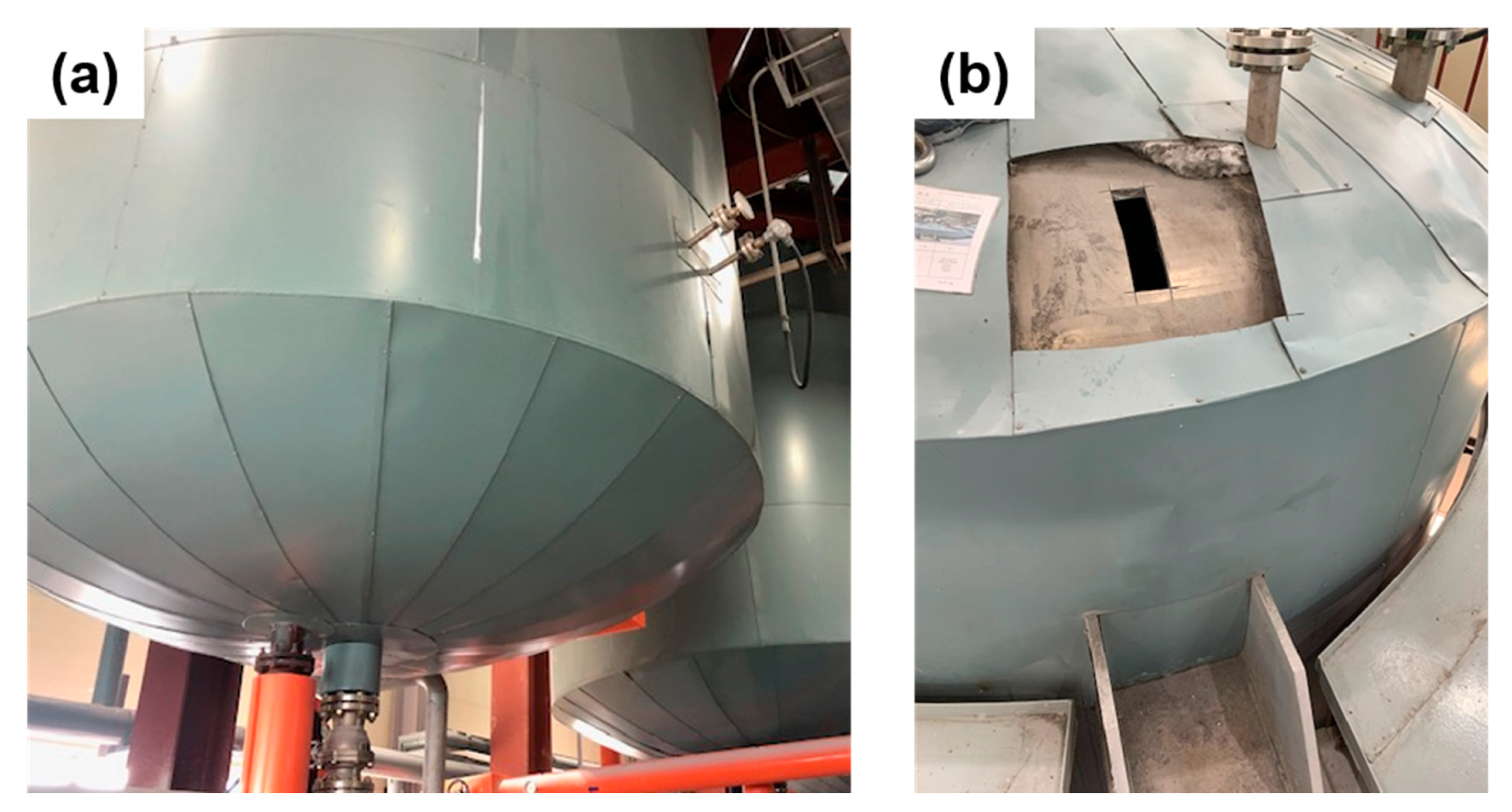


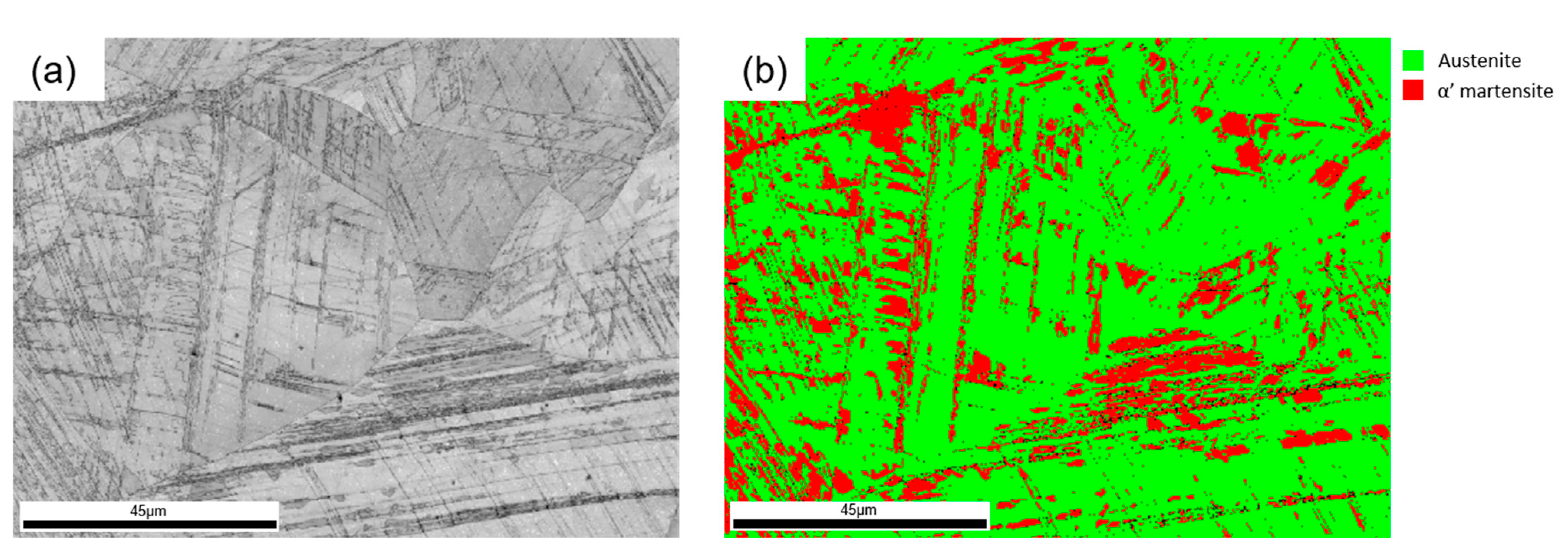
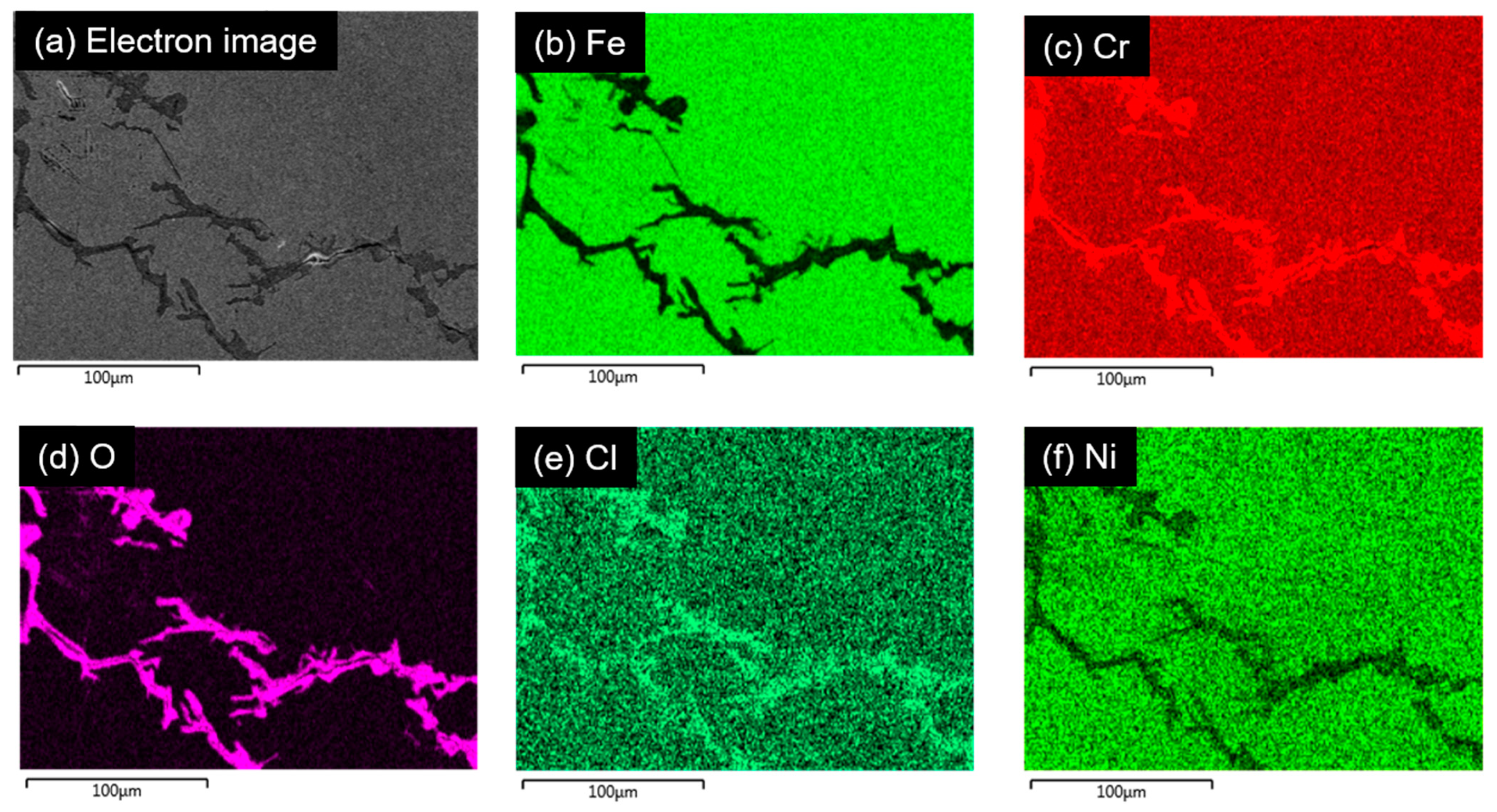
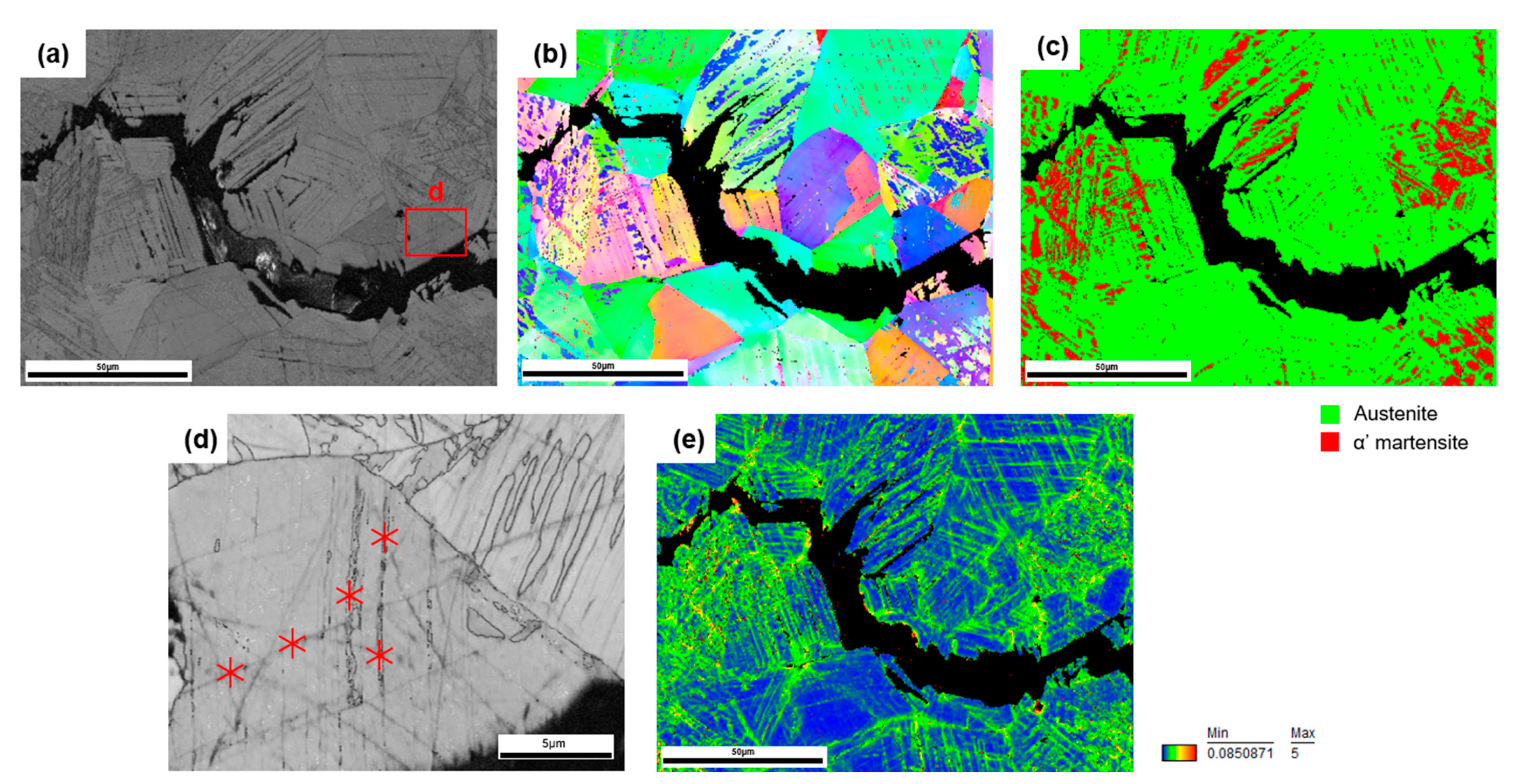


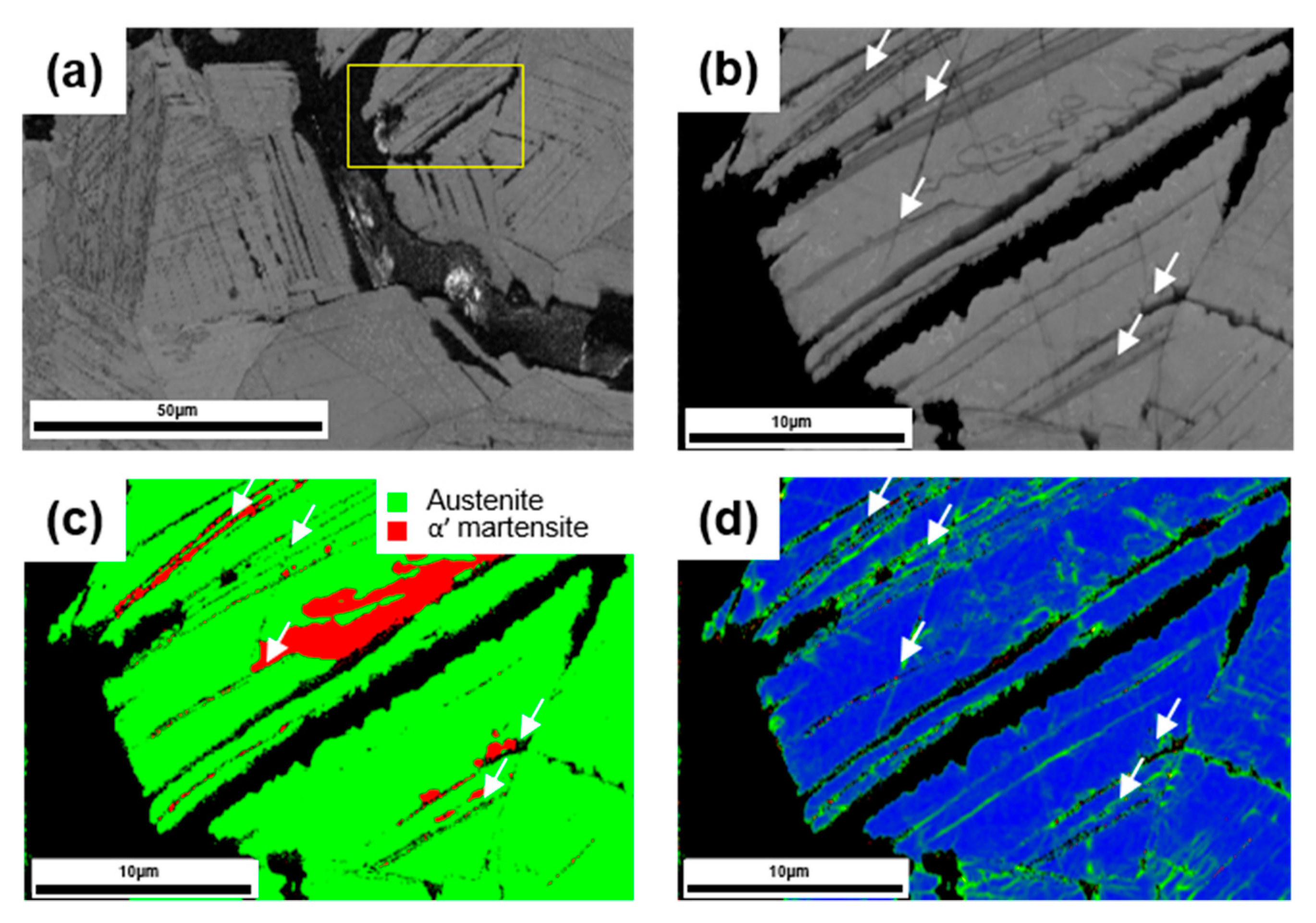
| C | Si | Mn | P | S | Cr | Ni | Fe |
|---|---|---|---|---|---|---|---|
| 0.04 | 046 | 1.0 | 0.028 | 0.004 | 18.15 | 7.87 | Bal. |
Publisher’s Note: MDPI stays neutral with regard to jurisdictional claims in published maps and institutional affiliations. |
© 2020 by the authors. Licensee MDPI, Basel, Switzerland. This article is an open access article distributed under the terms and conditions of the Creative Commons Attribution (CC BY) license (http://creativecommons.org/licenses/by/4.0/).
Share and Cite
Park, I.; Kim, E.-Y.; Yang, W.-J. Microstructural Investigation of Stress Corrosion Cracking in Cold-Formed AISI 304 Reactor. Metals 2021, 11, 7. https://doi.org/10.3390/met11010007
Park I, Kim E-Y, Yang W-J. Microstructural Investigation of Stress Corrosion Cracking in Cold-Formed AISI 304 Reactor. Metals. 2021; 11(1):7. https://doi.org/10.3390/met11010007
Chicago/Turabian StylePark, Ihho, Eun-Young Kim, and Won-Jon Yang. 2021. "Microstructural Investigation of Stress Corrosion Cracking in Cold-Formed AISI 304 Reactor" Metals 11, no. 1: 7. https://doi.org/10.3390/met11010007
APA StylePark, I., Kim, E.-Y., & Yang, W.-J. (2021). Microstructural Investigation of Stress Corrosion Cracking in Cold-Formed AISI 304 Reactor. Metals, 11(1), 7. https://doi.org/10.3390/met11010007




